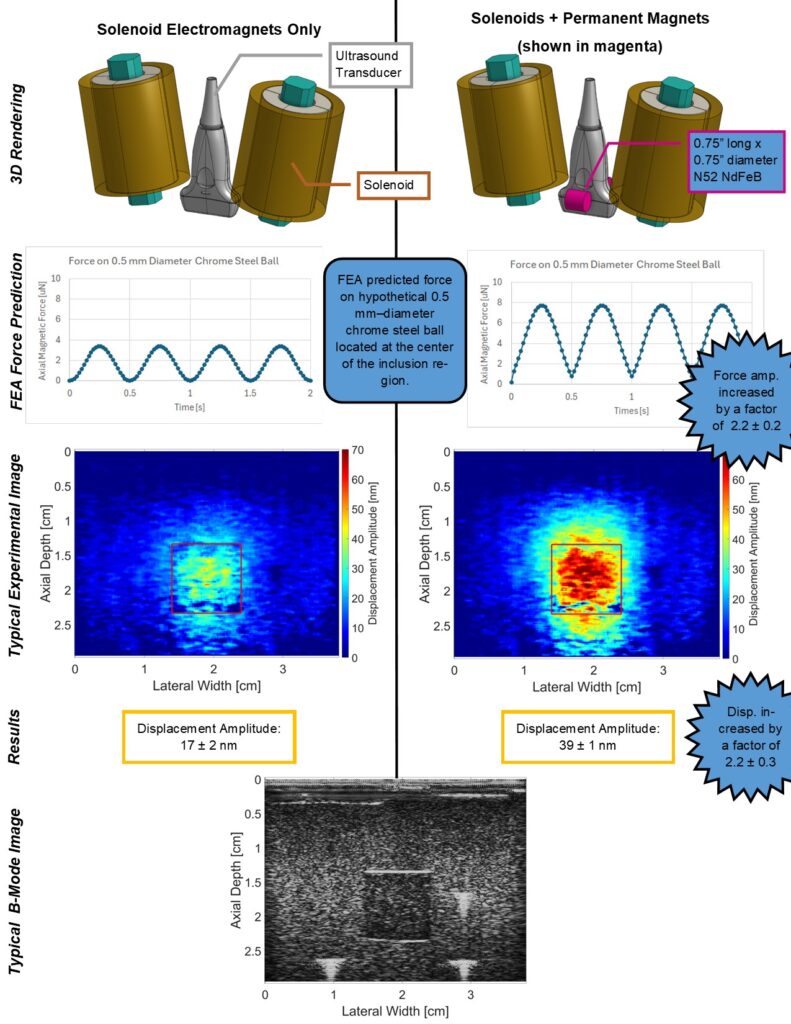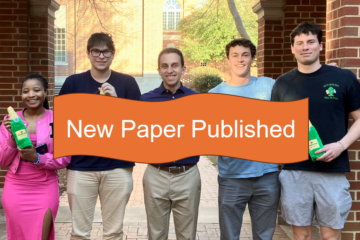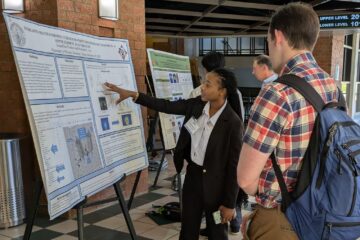My students and I have posted a new preprint on the arXiv entitled “A Finite Element Analysis Model for Magnetomotive Ultrasound Elastometry Magnet Design with Experimental Validation.”
Abstract:
Objective. Magnetomotive ultrasound (MMUS) using magnetic nanoparticle contrast agents has shown promise for thrombosis imaging and quantitative elastometry via magnetomotive resonant acoustic spectroscopy (MRAS). Young’s modulus measurements of smaller, stiffer thrombi require an MRAS system capable of generating forces at higher temporal frequencies. Solenoids with fewer turns, and thus less inductance, could improve high frequency performance, but the reduced force may compromise results. In this work, a computational model capable of predicting improved MRAS magnet configurations optimized for elastometry is presented and validated.
Approach. Finite element analysis (FEA) was used to model the force and inductance of MRAS systems. The simulations incorporated both solenoid electromagnets and permanent magnets in three-dimensional steady-state, frequency domain, and time domain studies.
Main results. The model successfully predicted a configuration in which permanent magnets could be used to increase the force supplied by an existing MRAS system. Accordingly, the displacement measured in a magnetically labeled validation phantom increased by a factor of 2.2±0.3 when the force was predicted to increase by a factor of 2.2±0.2. The model additionally identified a new solenoid configuration consisting of four smaller coils capable of providing sufficient force at higher driving frequencies.
Significance. These results indicate two methods by which MRAS systems could be designed to deliver higher frequency magnetic forces without the need for experimental trial and error. Either the number of turns within each solenoid could be reduced while permanent magnets are added at precise locations, or a larger number of smaller solenoids could be used. These findings overcome a key challenge toward the goal of thrombosis elastometry via MMUS.

The computational model predicted that adding permanent magnets to an existing MMUS system would increase magnetic force by a factor of ~2.2, and in experimental validation, magnetically-induced displacement did increase by a factor of ~2.2.


